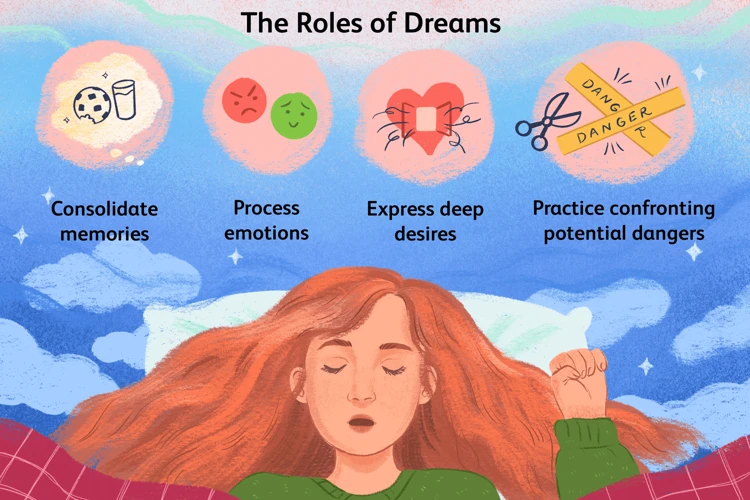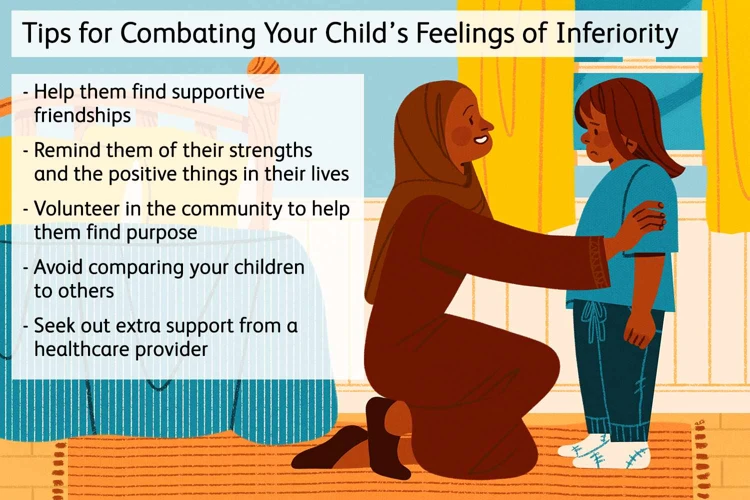Do you often wake up in a state of a fright, only to find out that it was just a nightmare? Nightmares can be unsettling for adults, but they are even more distressing for children. As parents, it can be heart-wrenching to witness our little ones dealing with the fear and confusion that comes with these nighttime terrors. However, there are ways to help our children cope and understand their nightmares. In this article, we will delve into the world of children’s nightmares, explore their impact, and provide practical steps on how to support our young ones through these unsettling experiences.
Understanding Nightmares

Understanding Nightmares can be a perplexing task, especially when it comes to children. These nighttime terrors are more than just bad dreams; they can evoke fear and anxiety that lingers long after waking up. What are nightmares exactly? They are vivid and disturbing dreams that often awaken the sleeper, leaving them in a state of unease. Nightmares are commonly experienced by people of all ages, but they are particularly prevalent in children. Common themes in children’s nightmares can vary, ranging from being chased by monsters to losing a loved one. While the content of nightmares may seem random, experts believe that they can provide valuable insights into a child’s unconscious thoughts and emotions. By understanding the common themes and symbols in nightmares, we can gain a deeper understanding of our child’s fears and help them process and overcome these distressing experiences.
What are nightmares?
Nightmares are intense and distressing dreams that can jolt a person awake, leaving them feeling frightened, anxious, and unsettled. They are different from regular dreams in that they evoke strong negative emotions and often involve situations that are frightening or disturbing in nature. Nightmares commonly occur during the REM (rapid eye movement) stage of sleep, which is when most dreaming takes place. During REM sleep, the brain is highly active, and vivid and realistic dreams occur. However, nightmares can happen at any stage of sleep.
Nightmares can vary in content and intensity, but they often involve scenarios such as being chased, attacked, or falling from heights. The imagery and events in nightmares can feel very real, adding to the fear and discomfort experienced by the dreamer. Children are particularly susceptible to nightmares as their imaginations are active, and they may have difficulty distinguishing between reality and dreams.
While nightmares are a normal part of sleep, recurring nightmares or those that interfere with daily functioning may indicate underlying issues that need to be addressed. Analyzing and interpreting nightmares can provide valuable insights into a person’s subconscious thoughts, emotions, and fears. Dream journaling is a useful tool that can help individuals track and understand recurring nightmares, facilitating self-reflection and potential therapeutic exploration.
Common themes in children’s nightmares
- Monsters and imaginary creatures: Many children experience nightmares involving monsters, ghosts, or other imaginary creatures. These creatures can symbolize the child’s fears and anxieties. It’s important to reassure them that these creatures are not real and cannot harm them.
- Being chased or attacked: Another common theme in children’s nightmares is being chased or attacked. This can reflect feelings of vulnerability or being overwhelmed in their waking life. Helping children understand that they are safe and providing them with a sense of security can alleviate these fears.
- Loss of a loved one: Dreams about losing a loved one can be particularly distressing for children. These nightmares may stem from their attachment to family members or fear of separation. Assuring them of their loved ones’ presence and promoting open communication can help them cope with these nightmares.
- Falling or being trapped: Dreams of falling or being trapped can represent a child’s sense of losing control or feeling trapped in a situation. Encouraging them to express their feelings and providing a safe environment for them to explore their emotions can alleviate these nightmares.
- Conflict or tense situations: Children may have nightmares involving conflict or tense situations, such as arguments or being in danger. These dreams can reflect their experiences with conflict or struggles with relationships. Promoting open communication and teaching them problem-solving skills can help them navigate these situations in their dreams and in real life.
Understanding the common themes in children’s nightmares can help parents provide tailored support and reassurance to their children. If you’re interested in exploring more about the interpretation of nightmares, you can check out our article on common nightmare symbols and interpretations.
The Impact of Nightmares

Nightmares can have a significant impact on children, affecting both their emotional well-being and sleep patterns. Emotionally, nightmares can leave children feeling scared, anxious, and even traumatized. They may experience a heightened sense of fear during bedtime or exhibit behavioral changes, such as being more clingy or avoidant. These emotional effects can also have a knock-on effect on their daytime activities and relationships. In terms of sleep disturbances, nightmares can disrupt a child’s sleep, leading to difficulties falling asleep or staying asleep through the night. This can result in daytime fatigue, decreased concentration, and poor academic performance. When left unaddressed, the impact of nightmares can be long-lasting and interfere with a child’s overall well-being. It is essential to provide support and guidance to help children cope with and overcome the effects of nightmares. Understanding the potential link between nightmares and trauma can also be valuable in navigating these experiences and offering appropriate support.
Emotional effects
Emotional effects can be profound when children experience nightmares. Upon waking from a terrifying dream, they may feel overwhelmed by fear, sadness, or anxiety. These emotions can linger throughout the day, affecting their mood, behavior, and overall well-being. Children may become clingy or have difficulty separating from their parents, fearing that the nightmare will come true or reoccur. They may also exhibit signs of increased irritability, aggression, or withdrawal. Nightmares can also lead to a diminished sense of security and self-esteem, as children may question their own ability to protect themselves or feel ashamed for being scared. It is crucial for parents to provide a supportive and understanding environment and validate their child’s emotions. Helping them navigate through these emotional effects can promote resilience and emotional growth.
Sleep disturbances
Sleep disturbances are a common consequence of nightmares in children. These disruptions can manifest in various ways, impacting the overall quality of their sleep. One of the most immediate effects is difficulty falling back asleep after experiencing a nightmare. The intense emotions and fear caused by the nightmare can make it challenging for children to calm down and relax enough to return to sleep. As a result, they may experience prolonged periods of wakefulness, leading to sleep deprivation and daytime drowsiness. In some cases, nightmares can also trigger other sleep-related issues such as bedwetting and sleepwalking. These disturbances can cause significant distress for both the child and their parents, as they disrupt the child’s restful sleep and affect their overall well-being. It is important for parents to address these sleep disturbances and work towards creating a safe and secure sleep environment to help alleviate the impact of nightmares on their child’s sleep patterns.
How to Help Children Cope

When it comes to helping children cope with nightmares, a supportive and understanding approach is crucial. Here are some effective strategies to assist your child in navigating through their nighttime fears. Firstly, create a safe and reassuring sleep environment for your child by ensuring their bedroom is comforting and free from any perceived threatening stimuli. This can include using a nightlight or a favorite stuffed animal. Establishing a relaxing bedtime routine can also be beneficial, as it helps create a sense of security and calm before sleep. Encourage your child to discuss their fears openly by encouraging open communication and listening attentively without judgment. Teaching relaxation techniques such as deep breathing or progressive muscle relaxation can empower your child to manage their anxiety when they wake up from a nightmare. By employing these nurturing strategies, you can provide the support needed for your child to cope with and overcome their nightmares.
Create a safe and reassuring sleep environment
Creating a safe and reassuring sleep environment is crucial for helping children cope with nightmares. Here are some key steps:
- Eliminate fear-triggering elements: Identify any factors in the bedroom that might contribute to a sense of fear or unease. For example, remove scary or disturbing posters, toys, or images that might be present in the room.
- Ensure adequate lighting: Some children find comfort in having a nightlight or a dim light in their room. This can help alleviate their fear of the dark and create a sense of security.
- Create a cozy atmosphere: Make the bedroom a calming and inviting space. Use soft bedding, comfortable pajamas, and consider incorporating soothing elements such as lavender scents or relaxing music.
- Promote a sense of security: Reinforce the idea that the bedroom is a safe space. Use child-friendly security measures like a sturdy lock on the door or a security object like a favorite stuffed animal.
- Establish consistent sleep routines: Having a predictable bedtime and night-time routine can provide children with a sense of structure and stability, which in turn can help reduce anxiety and improve sleep quality.
By implementing these strategies, you can create an environment that promotes feelings of safety and calmness, reducing the likelihood and severity of nightmares.
Establish a relaxing bedtime routine
Establishing a relaxing bedtime routine is crucial for helping children cope with nightmares and promoting a peaceful night’s sleep. A consistent routine helps signal to the child’s body and mind that it’s time to wind down and prepare for rest. Here are some tips for creating a relaxing bedtime routine:
1. Set a consistent bedtime: Choose a specific time for your child to go to bed each night. Consistency helps regulate their body clock and makes it easier for them to fall asleep.
2. Create a calm environment: Make your child’s bedroom a tranquil and peaceful space. Dim the lights, play soft music, or use a white noise machine to create a soothing atmosphere.
3. Avoid stimulating activities: Limit screen time, especially close to bedtime. The blue light emitted by electronic devices can interfere with the production of melatonin, a hormone that helps regulate sleep.
4. Encourage relaxation: Incorporate calming activities into the routine, such as reading a book together, listening to soft music, or practicing gentle stretches. These activities help the child relax and unwind before sleep.
5. Practice good sleep hygiene: Ensure your child is comfortable by providing a cozy bed, comfortable pillows, and appropriate room temperature. Additionally, encourage them to use the bathroom before bed to minimize nighttime disruptions.
Remember, each child is unique, so adapt the routine to suit their preferences and needs. Consistency and a soothing environment are key to establishing a relaxing bedtime routine and helping your child feel safe and secure before drifting off to sleep.
Encourage open communication
Encouraging open communication with your child is crucial when it comes to helping them cope with nightmares. By creating a safe and non-judgmental space for them to express their fears and feelings, you can offer them support and reassurance. Here’s how you can encourage open communication:
1. Active listening: When your child wants to share their nightmares or fears, give them your full attention. Maintain eye contact, nod, and show interest in what they have to say. Avoid interrupting or dismissing their experiences.
2. Ask open-ended questions: Instead of asking yes/no questions, ask open-ended questions that encourage your child to share more details about their nightmares. For example, you could ask, “Tell me more about what happened in your dream” or “How did the dream make you feel?”
3. Validate their feelings: Let your child know that their feelings are valid and normal. Reassure them that it’s okay to feel scared or upset after a nightmare. Avoid minimizing their emotions or telling them not to be afraid.
4. Provide empathy and comfort: Show empathy towards your child’s fears and offer comfort. Let them know that you understand how they feel and that you are there to support them. You can offer hugs, soothing words, or a comforting bedtime routine to help them feel safe.
5. Share your own experiences: If you have had nightmares as a child or even as an adult, share your experiences with your child. This can help them feel less alone and show them that nightmares are a common part of life. However, be mindful not to overshadow their experiences or make it seem like a competition.
Encouraging open communication with your child not only helps them process their nightmares but also strengthens your bond and trust. By actively listening, validating their feelings, and providing comfort, you can create a supportive environment where they feel safe expressing their fears.
Teach relaxation techniques
Teaching relaxation techniques can be a valuable tool in helping children cope with nightmares and promote a sense of calmness and well-being. One effective technique is deep breathing. Show your child how to take slow, deep breaths in through their nose and out through their mouth. Encourage them to imagine blowing out their worries and fears with each exhale. Guided imagery is another technique that can help children relax. Encourage them to close their eyes and imagine a peaceful place, such as a beach or a forest. Describe the scene in vivid detail, guiding them through sensory experiences like feeling the warm sand between their toes or hearing the gentle rustling of leaves. Progressive muscle relaxation is also beneficial. Teach your child to tense and then relax different muscle groups, starting from their toes and working their way up to their head. This helps release physical tension and promotes a sense of relaxation. Finally, consider incorporating activities such as yoga or meditation into your child’s daily routine. These practices can help them develop mindfulness and a greater sense of self-awareness. By teaching relaxation techniques, you are empowering your child with valuable tools to manage their anxiety and create a sense of inner calmness.
Encouraging Understanding

Encouraging understanding is essential when helping children cope with their nightmares. Validating their feelings is an important first step. Let them know that their fear is real and that they are not alone. By validating their feelings, we show them empathy and create a safe space for them to express their emotions. It’s also crucial to explain the concept of dreams to children. Help them understand that dreams are a normal part of sleep and that they are not real. By providing this context, we can help alleviate some of the confusion and fear that nightmares bring. Additionally, promoting positive associations with sleep can help children develop a healthier mindset towards bedtime. Encourage them to think of bedtime as a time for rest and rejuvenation rather than a time for nightmares. By focusing on positive experiences and providing a calming sleep environment, we can empower children to overcome their nightmares and foster a sense of peace and understanding.
Validating their feelings
Validating their feelings is a crucial step in helping children cope with nightmares. When a child wakes up from a nightmare, they may experience a wide range of emotions, including fear, confusion, and sadness. As parents or caregivers, it is important to acknowledge and validate these feelings. Let your child know that their emotions are valid and that it’s normal to feel scared or upset after a bad dream. Encourage them to express their feelings and provide a safe space for them to do so. Reassure them that you are there to support them and that they are not alone in their experience. Avoid dismissing or minimizing their emotions, as this can make them feel unheard or invalidated. Instead, offer empathy and understanding, letting them know that their feelings matter and that you are there to listen and help them through it. By validating their feelings, you are helping them develop a sense of emotional security and trust, which can significantly aid in their coping and understanding of nightmares.
Explaining the concept of dreams
One way to help children cope with nightmares is by explaining the concept of dreams to them. This can help demystify the experience and provide a sense of understanding and control. Here are a few key points to consider when explaining the concept of dreams to children:
1. Dreams as a Product of Imagination: Children have rich imaginations, and dreams are a way for their brain to create stories and scenarios. Explain that dreams happen when their mind is still active during sleep and that their imagination takes over.
2. Temporary and Unreal: Emphasize that dreams are not real events. Assure them that the things they see or experience in dreams are not happening in the waking world. This can help alleviate the fear and confusion that can linger after a scary dream.
3. Processing Emotions and Experiences: Explain that dreams can be a way for their brain to process their emotions, experiences, and thoughts from the day. Assure them that even though dreams can be intense, they are a natural and normal part of sleep.
4. Symbolism in Dreams: Mention that dreams often use symbolism, where certain objects, people, or situations represent something else. Encourage them to share details about their dreams, and gently explore the possible meanings behind the symbols. However, it’s important to emphasize that dream interpretations are subjective and can vary from person to person.
5. Dreams as Adventure and Creativity: Highlight that dreams can also be fun and exciting. Share stories of dreams where pleasant experiences occurred, encouraging them to view dreams as opportunities for adventure and creativity.
By explaining the concept of dreams in an age-appropriate manner, we can help children develop a positive and informed perspective on their own dreams, reducing anxiety surrounding nightmares.
Promoting positive associations with sleep
To promote positive associations with sleep, it is important to create a relaxing and soothing sleep environment. This can be done by ensuring the bedroom is dark, quiet, and comfortable. Use soft lighting and calming colors to create a peaceful atmosphere. Consider incorporating comforting elements such as a favorite stuffed animal or blanket to provide a sense of security. Establishing a consistent bedtime routine is also crucial in promoting positive associations with sleep. This routine should involve relaxing activities such as reading a story, listening to calming music, or taking a warm bath. By associating these activities with sleep, children can develop a sense of comfort and relaxation when it’s time to go to bed. Additionally, encourage your child to engage in daytime activities that promote physical activity and mental stimulation. This helps to tire them out during the day, making it easier for them to fall asleep at night. Lastly, avoid using sleep as a punishment and instead, emphasize the importance of sleep for their overall well-being. By consistently promoting positive associations with sleep, your child will develop a healthier and more peaceful relationship with bedtime.
When to Seek Professional Help
Knowing when to seek professional help for your child’s nightmares is crucial in ensuring their well-being and addressing any underlying issues. While occasional nightmares are a normal part of childhood, there are certain signs that indicate the need for professional intervention. If your child’s nightmares are frequent, intense, or significantly impacting their daily life and functioning, it may be time to consult a healthcare professional. Additionally, if the nightmares are accompanied by other symptoms such as persistent fear, anxiety, or changes in behavior, it is important to seek professional help. Children who have experienced trauma, such as abuse, neglect, or a significant loss, may be more susceptible to nightmares as well. In these cases, it is crucial to engage the expertise of a therapist or counselor who specializes in trauma and can provide appropriate support. Another indicator that professional help is needed is if your child is experiencing sleep disturbances that persist over an extended period of time. These disturbances can include difficulty falling asleep, extreme fear of going to sleep, or frequent disruptions throughout the night. A healthcare professional can conduct a comprehensive evaluation to determine any underlying issues contributing to the nightmares and provide appropriate treatment and interventions. Remember, seeking professional help is not a sign of failure, but rather a proactive step in ensuring your child’s well-being and helping them navigate through their nightmares in a healthy and supportive way.
Conclusion
Conclusion: Helping children cope with nightmares is essential for their emotional well-being and sleep quality. By creating a safe sleep environment, establishing a relaxing bedtime routine, and encouraging open communication, we can provide the support and reassurance our children need. Teaching relaxation techniques and promoting positive associations with sleep can also be effective strategies in helping children cope with nightmares. It is important to validate their feelings and explain the concept of dreams to help them have a better understanding of their experiences. While nightmares are a common part of childhood, it is crucial to remember that if they persist or significantly impact your child’s daily life, seeking professional help is advisable. By taking these steps, we can empower our children to cope with nightmares and ultimately foster a sense of security and well-being in their sleep. With our love and guidance, they can conquer their fears and experience peaceful nights once again.
Frequently Asked Questions
What triggers nightmares in children?
Nightmares in children can be triggered by various factors such as stress, anxiety, changes in routine, exposure to frightening media, or even certain medications.
Are nightmares normal in childhood?
Yes, nightmares are a normal part of childhood. It is estimated that around 50% of children between the ages of 3 and 6 experience nightmares occasionally.
How can a parent calm a child after a nightmare?
After a nightmare, parents can offer comfort and reassurance to their child. They can stay with the child, provide a soothing presence, and talk about the dream in a supportive manner.
Should parents wake a child up from a nightmare?
It is generally not recommended for parents to wake a child up from a nightmare. Instead, it is better to allow the child to naturally awaken or comfort them if they naturally wake up.
Can nightmares be prevented in children?
While it is not possible to prevent all nightmares, there are some steps parents can take to reduce the likelihood of nightmares, such as maintaining a consistent bedtime routine and creating a calm and safe sleep environment.
What are some relaxation techniques that can help children cope with nightmares?
Relaxation techniques such as deep breathing exercises, visualization, and progressive muscle relaxation can be helpful for children in managing their anxiety and promoting better sleep.
How can parents encourage open communication about nightmares with their children?
Parents can encourage open communication by creating a safe and non-judgmental space for their children to talk about their dreams. They can ask open-ended questions and actively listen to their child’s experiences without dismissing or minimizing their feelings.
Is it necessary to keep a dream journal to analyze children’s nightmares?
Keeping a dream journal can be a helpful tool for older children or adolescents who are interested in exploring their nightmares further. It can assist in identifying recurring themes or patterns and aid in self-reflection.
Can trauma be a cause of frequent nightmares in children?
Yes, trauma can be a cause of frequent nightmares in children. Traumatic experiences can lead to the development of post-traumatic stress disorder (PTSD), which often involves nightmares related to the traumatic event.
When should parents seek professional help for their child’s nightmares?
If a child’s nightmares significantly disturb their sleep, daily functioning, or emotional well-being, or if they are accompanied by other concerning symptoms, it may be beneficial for parents to seek professional help from a healthcare provider or mental health professional.








